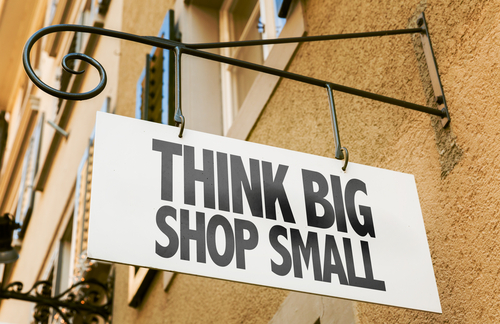Given the choice between the Ford Model T or the Tesla Model S, manual or automatic, stick shift or self-driving, which would you choose? From a business perspective, think about it this way: if your team had to decide between an outdated system riddled with inefficiencies or an automatic one complete with real-time data dashboards, which would win?
Your choice would be obvious—it’s the latter. But when you consider just how many lending institutions are faced with this decision today, yet stick to SMB lending solutions with rickety engines, rusty frames, and components prone to failure, it not only begs the question of why—but also what’s at stake? Because people aren’t buying Model Ts anymore.
Here’s what small business customers are buying—and who they’re buying it from.
- Reliability: The Big Banks
Chase, Wells Fargo, Bank of America. Let’s face it: the big players have a lot going for them. A large, loyal customer base, a nationwide footprint, and personalized services that small business customers rely on every day to manage their finances. For many capital-seeking small business applicants, these banks are already top-of-mind when they go to apply for a loan. The bank is reputable. The technology is reliable. They have a vast support staff at their disposal, and they’re accessible from pretty much anywhere an applicant might be—and wherever they’re headed next. Without an online presence that puts your services in front of your customers anywhere, anytime, your community bank is exponentially less accessible—and that raises a red flag on your reliability.
- Convenience: The Digital Giants
Stripe, Paypal, Amazon. A 2016 Wells Fargo survey showed that owners of small businesses are willing to pay more for products and services that make their lives easier. The digital giants have made convenience their mission—and it’s no surprise that they’ve started to make their way into the fintech space. While Paypal may have paved the way, companies like Apple and Google continue to unveil cutting-edge consumer fintech products, with business finance solutions following close behind. In June 2020, Amazon partnered with Goldman Sachs to offer lines of credit to merchants and independent retailers already selling their products and services on Amazon. Integrating directly into the Amazon platform, the product meets merchants (quite literally) where they are, bypassing traditional lending institutions altogether. Speed and convenience come in at the number one and two most important attributes of a small business lender. If you don’t have them, you don’t just risk losing to Amazon or Google—you risk losing out on the entire small business segment.
- Innovation: The Alternative Lenders
OnDeck, Biz2Credit, Kabbage. Alternative lenders are taking up new space amidst an evolving small business lending landscape where digitization and automation are king—and time-pressed small business owners are capitalizing where they can. From 2016 to 2018, the percentage of small business loan applications going to alternative lenders (as opposed to community banks) has almost doubled. And in 2018 alone, alternative lenders funded more than $50 billion to small business owners—all while raking-in exponentially more interest. There’s no question that the trends point towards customers bypassing community banks for alternative lending solutions. Luckily, you know exactly what the small business customers are looking for. What do the digital giants and the alternative lenders have in common? They’re automatic—not manual.
It’s time to take advantage of digital lending channels, end-to-end automation, and more efficient lending processes—driving you toward a higher ROI. Right now, your strategy is about continued relevance in an increasingly digitized world. But once you get up to speed, you’ll be able to do much more than simply survive. Innovation, retention, and revenue are right around the corner.



